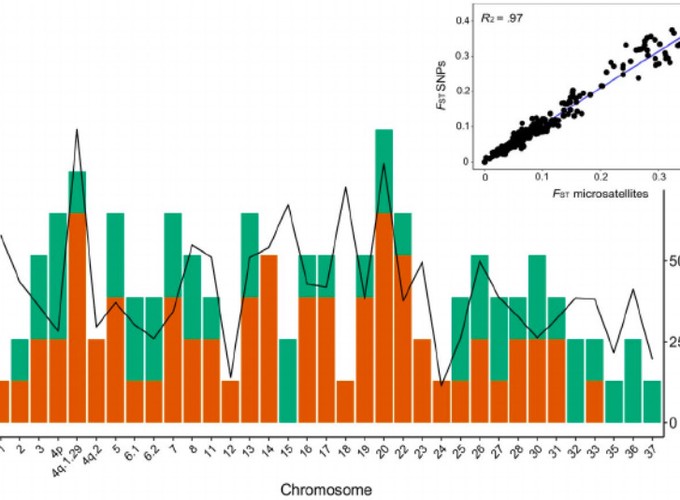Resolving fine-scale population structure and fishery exploitation using sequenced microsatellites in a northern fish

Resolving fine-scale population structure and fishery exploitation using sequenced microsatellites in a northern fish
Abstract
The resiliency of populations and species to environmental change is dependent on the maintenance of genetic diversity, and as such, quantifying diversity is central to combating ongoing widespread reductions in biodiversity. With the advent of next-generation sequencing, several methods now exist for resolving fine-scale population structure, but the comparative performance of these methods for genetic assignment has rarely been tested. Here, we evaluate the performance of sequenced microsatellites and a single nucleotide polymorphism (SNP) array to resolve fine-scale population structure in a critically important salmonid in north eastern Canada, Arctic Charr (Salvelinus alpinus). We also assess the utility of sequenced microsatellites for fisheries applications by quantifying the spatial scales of movement and exploitation through genetic assignment of fishery samples to rivers of origin and comparing these results with a 29-year tagging dataset. Self-assignment and simulation-based analyses of 111 genome-wide microsatellite loci and 500 informative SNPs from 28 populations of Arctic Charr in north-eastern Canada identified largely river-specific genetic structure. Despite large differences (~4X) in the number of loci surveyed between panels, mean self-assignment accuracy was similar with the microsatellite loci and the SNP panel (>90%). Subsequent analysis of 996 fishery-collected samples using the microsatellite panel revealed that larger rivers contribute greater numbers of individuals to the fishery and that coastal fisheries largely exploit individuals originating from nearby rivers, corroborating results from traditional tagging experiments. Our results demonstrate the efficacy of sequence-based microsatellite genotyping to advance understanding of fine-scale population structure and harvest composition in northern and understudied species.